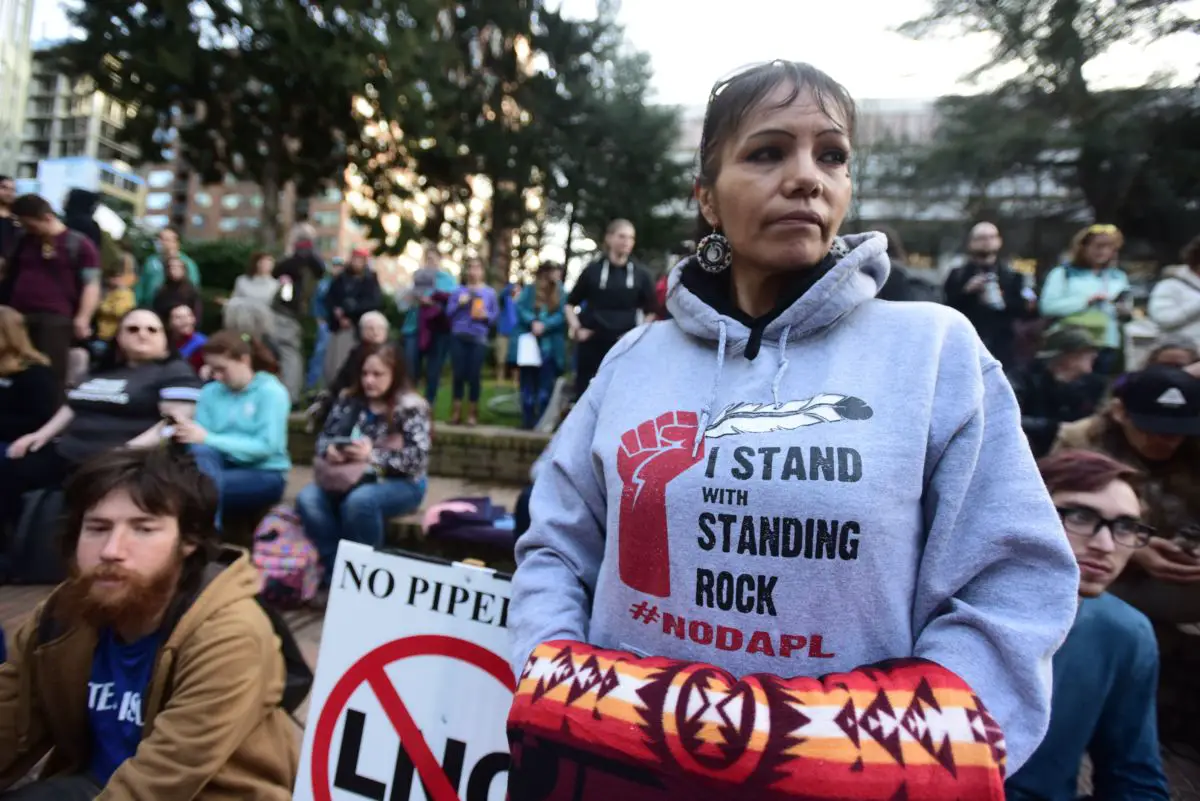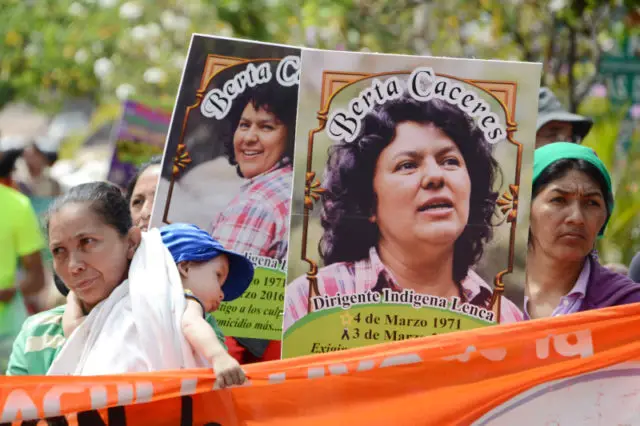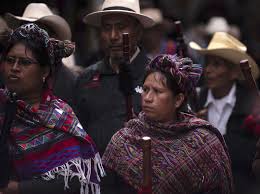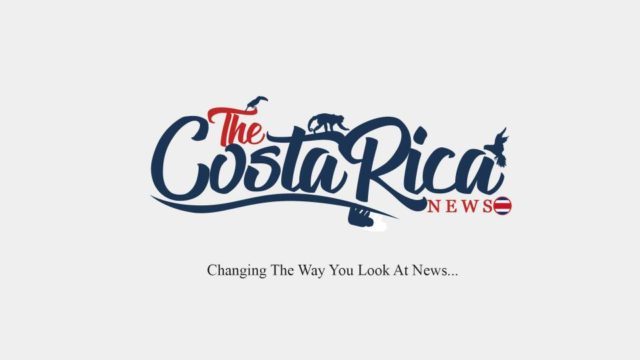The killings of members belonging to indigenous populations, along with persecution and harassment, have generated fear, helplessness, sadness and mostly anger in the voices of many who today demand justice.

The unfortunate death, six months ago, of the indigenous Bribri ethnic leader in Costa Rica Sergio Rojas, has generated in recent days concentrations of environmentalists and human rights activists, especially on the outskirts of Belén Convention Center (CCB), demanding justice for the death of Rojas, The Costa Rica News (TCRN), being as it is, a citizen-based information platform, decided to carry out a series of articles, so everyone can acquire the facts in detail about these cases against indigenous leaders not only of Costa Rica but from all Latin American countries.
The idea from TCRN has always been to inform and beyond all sensitize each person, and what we can do to generate solutions, what not to do to avoid damage to our planet. This is a theme that has aroused many strong feelings, the longing for justice mostly; get to know more…
Each year the cases increase of violent attacks towards indigenous leaders. All of them defending the rights of their communities. And these lives are turned off for what reason? For defending what is rightfully theirs? With clear evidence of corruption within the legal framework of each country?
Through “Global Witness”, various information on cases of violence against indigenous leaders in Latin America has come to light. Global Witness is an international organization that has twenty years of existence campaigning against conflicts and corruption related to natural resources, violations of environmental and associated human rights. It has more than 100 employees in London, Washington DC, and Brussels, along with a global network of partners and allies.
Organizations in Costa Rica such as Fecon (Ecological Federation), led by Henry Picado and others have been constant in everything that has to do with the climate issue, illegal environmental actions, injustices against native peoples, who maintain a struggle towards the protection of their natural habitats, in fact in the protest carried out in front of the CCB, where the “PreCOP” talks were taking place, they stated their demand for the government of President Carlos Alvarado “to leave his double speech and take the necessary measures to address the great ecological problems that arise in the country, as well as ending his complicity with extractive companies and their destructive practices”.
According to “Global Witness” data, in 2017 there was an increase in threats, violence, and murders towards environmental activists, to be more specific a total of 207 leaders, most of them from Latin America, considered the most dangerous region in the world for this type of activity.
In 2018, the number was 164 crimes against those who defend the environment, 83 of them occurred in Latin America. Colombia was named as the country with the highest risk in the region with 24 murders, then Brazil with 20, Guatemala with 16 and Mexico with 14.

In 2016, environmentalist Berta Cáceres was murdered in Honduras, two years later (2018) they found 7 men guilty for her death. It should be noted that the trial was postponed several times. Amnesty International described the results of this trial as a “half-truth” and said that the intellectual authors of the crime have not yet been identified. Human rights organizations maintain their doubts about the legitimacy of the process in this case.
In Peru, 6 indigenous farmers were murdered, and the suspects were
Linked to agribusiness.
Meanwhile, in Venezuela, various indigenous groups condemned at the beginning of 2019, the murder of 5 Venezuelan indigenous people during the entry of a supposed “humanitarian aid”, that is, the political factor was included in this case. The incident occurred in Santa Elena de Uairén, a Venezuelan town located in the southeast of the country, in the state of Bolívar.
Also, seven indigenous people, belonging to the Pemón and Warao ethnic groups, were killed by Venezuelan public force agents during protests in the Delta Amacuro and Bolívar states, between September 2017 and February 2019. The alleged perpetrators, members of the National Guard (GNB) and the Delta Amacuro Police, acted according to the pattern of excessive use of force to contain these violent demonstrations, using firearms and causing the deaths.
In Mexico, according to specialists, 50% of the Mexican territory is considered indigenous territory; most of the mines, mineral deposits, bodies of water and biodiversity of the country are part of their territorial heritage.
Global Witness published that Mexico was the fourth most dangerous country on Earth for eco-defenders in 2018 with 14 murders, and in 2019 the report placed it in sixth place with 14 homicides of environmentalists.
Gustavo Sánchez, director of the Mexican Network of Forest Peasant Organizations (MOCAF), said that aggressions against indigenous people are almost 80% of the reported cases. In the case of Oaxaca, Puebla, and Michoacán, 100% of those attacked are indigenous”.
In Colombia, on September 4 of this year, a debate was held in the Colombian Senate on the political control of the risk situation of indigenous peoples in that nation. In this regard, the National Indigenous Organization of Colombia (ONIC) reported that 167 indigenous Colombian leaders were killed since the Peace Agreement was signed with the Revolutionary Armed Forces of Colombia – Army of the People (FARC-EP), in Havana, Cuba, in 2016. Meanwhile, on September 15 (2019), the indigenous “communer” Henry Cayuy and the Wayuu “palaquero” José Manuel Pana Epieyú, were shot dead in the regions of Cauca and La Guajira, respectively.
At Nicaragua

Beginning the recent month of October, an armed attack on an indigenous Misquita community left three dead, and several homes and a church burned. In a statement, the Police force indicated that the indigenous community of Masmalaya was attacked by “a group of criminals with firearms who attacked and attempted to evict the villagers” from the place. The Inter-American Commission on Human Rights (IACHR) issued precautionary measures, demanding that the State of Nicaragua ensure the protection of indigenous people.
The current situation in Ecuador is very complicated because the Government designated indigenous leaders for alleged heading the recent protests. Indigenous groups in this country decided to march after the controversial decision of the Government to end the fuel subsidy and in rejection of other economic measures by President Lenin Moreno imposed on the country by the IMF.
Clashes between indigenous people and security officials were observed. The Ombudsman of Ecuador confirmed on October 10 the 5 people have died during the protests, among them, is the leader of the Confederation of Indigenous Nationalities of Ecuador (CONAIE). On October 13, the government of Ecuador agreed to repeal the decree that eliminated the fuel subsidy.
In Paraguay during February of this year, an indigenous man “without land” was killed in front of the Congress of Paraguay. Francisco López, 28 years old, brother of Derlis López, leader of the Takuarai indigenous community, fatally fell to the ground with a wound in the abdomen, by a shot. It is worth mentioning that in the surroundings of the Congress of Paraguay, in Downtown Asunción, there were families from the Guaraní Indigenous peoples who had been demanding during four months the return of their ancestral lands in the Corpus Christi district, department of Canindeyú, a few meters from the border with Brazil. These 300 people dedicated to agriculture were shot at (some mortally wounded) by Brazilian paramilitaries on October 28 (2018) in the middle of the night. They burned their homes, their school, and even their small church.
Brazil does not escape cases of violence against indigenous people; at least 118 indigenous people were killed in Brazil in 2016. Although the figure was lower than the 137 cases that occurred in 2015, at that time, the Missionary Indigenous Council (CIMI) denounced that the rights and lives of the indigenous people continued under threat.
On July 30, 2019, the Brazilian Federal Police investigated an alleged invasion that ended with the death of Chief Emyra Wajãpi, 62. Presidential spokesman Otávio Rêgo Barros reported that there was no evidence that there was an invasion of informal miners in the Waiãpi tribe area in Amapá (near the French Guiana border). Also, 57 eco-defenders were murdered last year, most of them acting against illegal logging in the Amazon rain forest.
Who is behind this violence?
The cause of many of the killings of indigenous leaders and environmental activists has to do with conflicts associated with mining, agribusiness, the defense of water sources, rural land expropriations, drug trafficking, illegal constructions, among others situations. Now it is up to the Civil society and Business sector of each country to ensure that land and environmental defenders can carry out their work without fear of being attacked or killed and that all their rights be respected. Elected state officials and the security forces, both at the national and local levels, should take all measures necessaries to protect the rights of indigenous leaders and environmental activists.
There could be various solutions or agreements to prevent so much murder or persecution of indigenous peoples, many of them defenders of land, of the environment, denouncers of great corruption. We already mentioned that governments and ordinary citizens must deal with the protection and investigation of cases that have occurred, so as not to increase the impunity index: Brave people whose lives have been turned off in Latin America.
This series of articles by TCRN will continue…..

